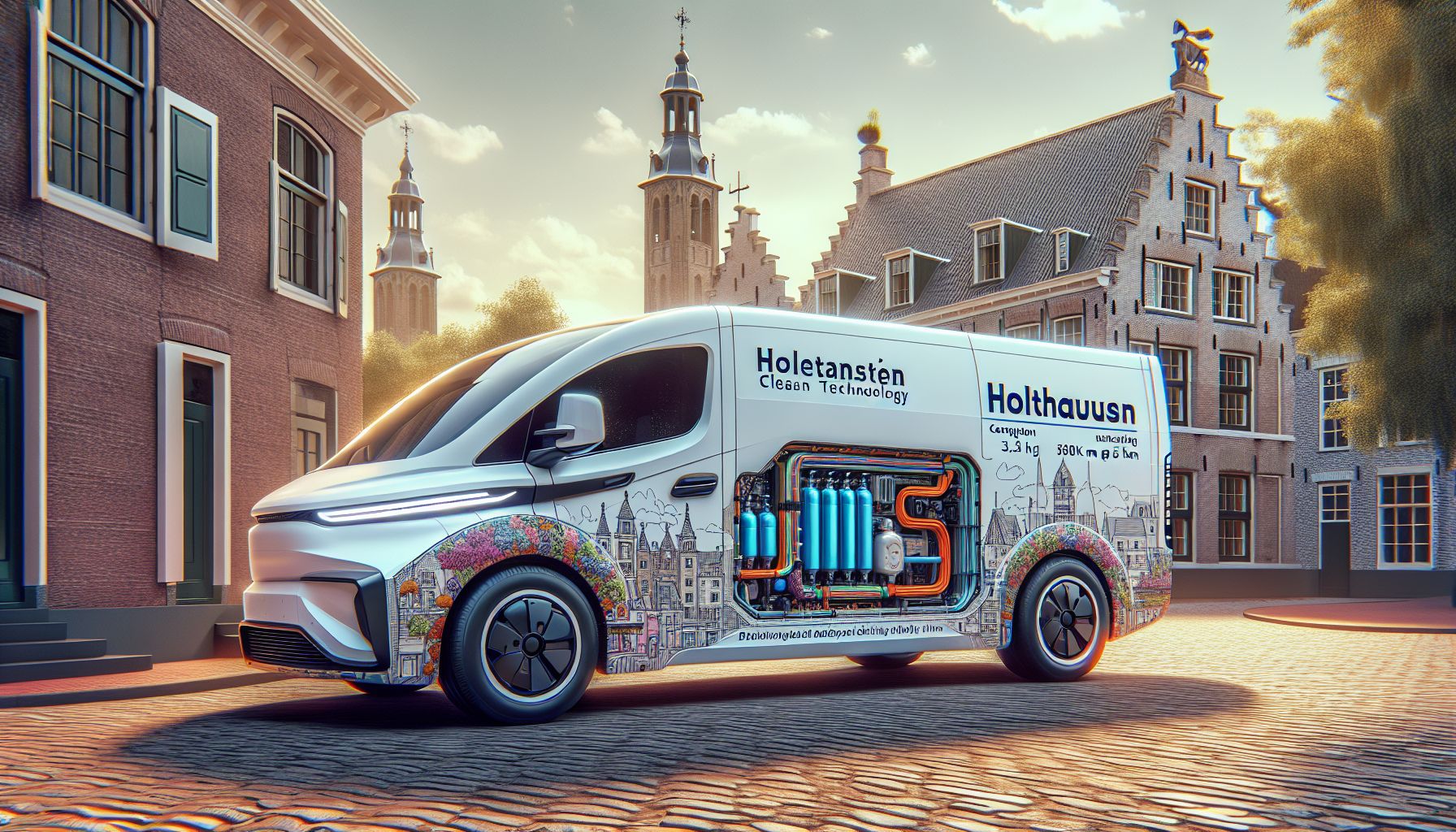Hydrogen-Powered Delivery Van Debuts in Netherlands

The Hague, Friday, 9 August 2024.
Holthausen Clean Technology unveils an emission-free delivery van for passenger transport, powered by hydrogen. The 3.2-ton vehicle boasts an 80 kW fuel cell, 960 kg payload capacity, and a 650 km range. Innovative design places hydrogen tanks under the chassis, maximizing cargo space.
Technological Advancements and Practicality
Holthausen Clean Technology, based in Hoogezand, Netherlands, has meticulously designed the hydrogen-powered delivery van with a keen eye on practicality and efficiency. By placing the hydrogen tanks under the chassis, the full cargo floor remains available, which is a significant advantage for commercial use. The vehicle can store up to 7.6 kg of hydrogen, which provides an impressive range of approximately 650 km. Additionally, the van can be refueled in just 5 minutes, making it a practical option for businesses that require quick turnaround times.
Implications for the Dutch Energy Sector
The introduction of this hydrogen-powered van signifies a substantial step forward for the Dutch energy sector, particularly in the context of reducing carbon emissions. Hydrogen technology is being increasingly recognized for its potential to decarbonize various sectors, including transportation. The use of hydrogen as a fuel source results in zero emissions, with the only byproduct being water vapor. This is particularly advantageous for urban areas that struggle with air quality issues due to vehicular emissions.
Global Innovations in Hydrogen Technology
The Netherlands is not alone in its pursuit of hydrogen innovation. In the United States, Joby Aviation has made significant strides with a hydrogen-powered flying taxi. Based in Marina, California, Joby recently completed a test flight covering over 900 km. The hydrogen-powered aircraft, which can carry up to four passengers, demonstrates the versatility and potential of hydrogen fuel cells for various forms of transportation. The aircraft uses liquid hydrogen, which offers a higher energy density compared to compressed hydrogen gas, thus extending its range significantly.
Challenges and Future Prospects
Despite the promising advancements, the hydrogen sector faces several challenges. One of the primary issues is the high cost of hydrogen production and storage. For instance, the liquid hydrogen used by Joby Aviation is significantly more expensive than other forms of energy. Additionally, infrastructure development for hydrogen refueling stations is still in its early stages, which could hinder widespread adoption. However, with continued investment and technological advancements, these challenges are expected to diminish over time.
Conclusion
As the global push towards sustainable energy solutions continues, innovations like Holthausen’s hydrogen-powered delivery van and Joby Aviation’s flying taxi are paving the way for a cleaner, greener future. These developments highlight the potential of hydrogen technology to transform various sectors and significantly reduce carbon emissions. With ongoing research and investment, hydrogen could become a cornerstone of global energy strategies, driving us closer to achieving net-zero emissions.

